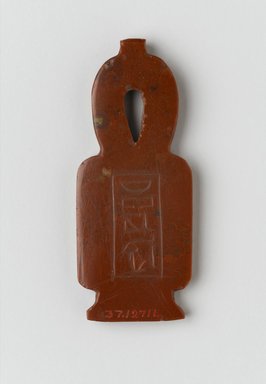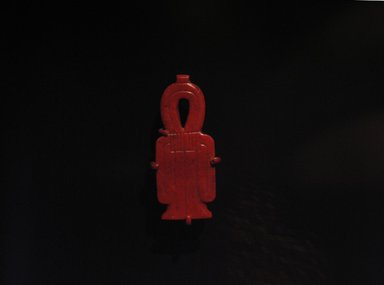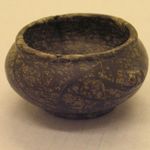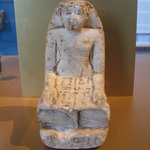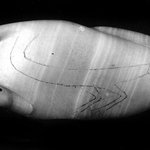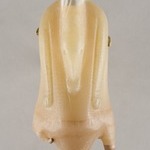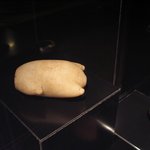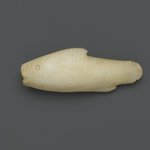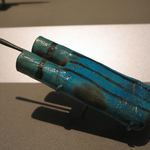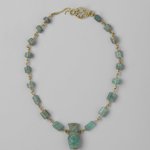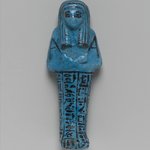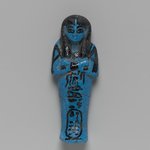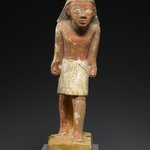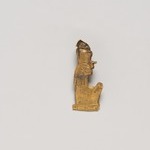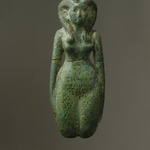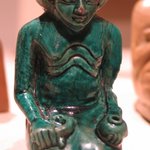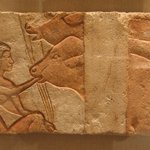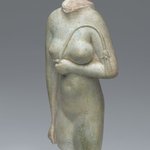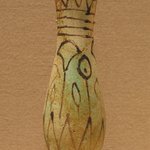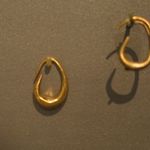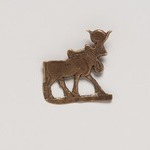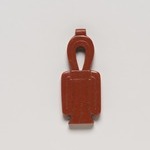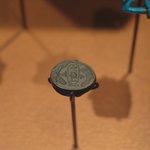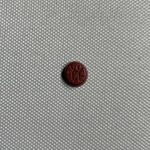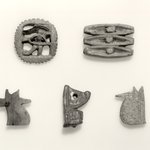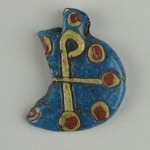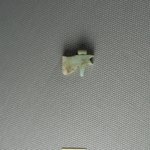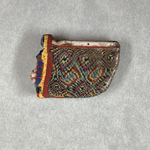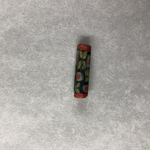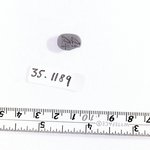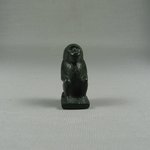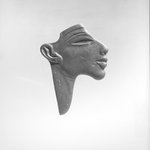Tyt Amulet (Knot of Isis)
Egyptian, Classical, Ancient Near Eastern Art
The Egyptians worked with gold and semiprecious stones from earliest times. They mined both types of material in the desert east of the Nile and in present-day Sudan, called “Nubia” in ancient times after the ancient Egyptian word for gold (nub). Clearly, objects made from these high-value materials were available only to the highest ranks of society.
MEDIUM
Jasper
DATES
ca. 1539–1075 B.C.E.
PERIOD
New Kingdom (possibly)
DIMENSIONS
2 3/8 x 1 x 3/16 in. (6 x 2.5 x 0.5 cm)
(show scale)
ACCESSION NUMBER
37.1271E
CREDIT LINE
Charles Edwin Wilbour Fund
CATALOGUE DESCRIPTION
Reddish- brown jasper amulet in the shape of a girdle tie. The space enclosed by the upper loop has been hollowed out. The other details have been given by incised lines with some slight rounding to the forms. On the rear surface is incised a rectangle containing “Lady of the House, Beqnesiyunu”.
Condition: Small chips; otherwise good.
MUSEUM LOCATION
This item is not on view
CAPTION
Tyt Amulet (Knot of Isis), ca. 1539–1075 B.C.E. Jasper, 2 3/8 x 1 x 3/16 in. (6 x 2.5 x 0.5 cm). Brooklyn Museum, Charles Edwin Wilbour Fund, 37.1271E. Creative Commons-BY (Photo: Brooklyn Museum, 37.1271E_front_PS2.jpg)
IMAGE
front, 37.1271E_front_PS2.jpg. Brooklyn Museum photograph, 2006
"CUR" at the beginning of an image file name means that the image was created by a curatorial staff member. These study images may be digital point-and-shoot photographs, when we don\'t yet have high-quality studio photography, or they may be scans of older negatives, slides, or photographic prints, providing historical documentation of the object.
RIGHTS STATEMENT
Creative Commons-BY
You may download and use Brooklyn Museum images of this three-dimensional work in accordance with a
Creative Commons license. Fair use, as understood under the United States Copyright Act, may also apply.
Please include caption information from this page and credit the Brooklyn Museum. If you need a high resolution file, please fill out our online
application form (charges apply).
For further information about copyright, we recommend resources at the
United States Library of Congress,
Cornell University,
Copyright and Cultural Institutions: Guidelines for U.S. Libraries, Archives, and Museums, and
Copyright Watch.
For more information about the Museum's rights project, including how rights types are assigned, please see our
blog posts on copyright.
If you have any information regarding this work and rights to it, please contact
copyright@brooklynmuseum.org.
RECORD COMPLETENESS
Not every record you will find here is complete. More information is available for some works than for others, and some entries have been updated more recently. Records are frequently reviewed and revised, and
we welcome any additional information you might have.


